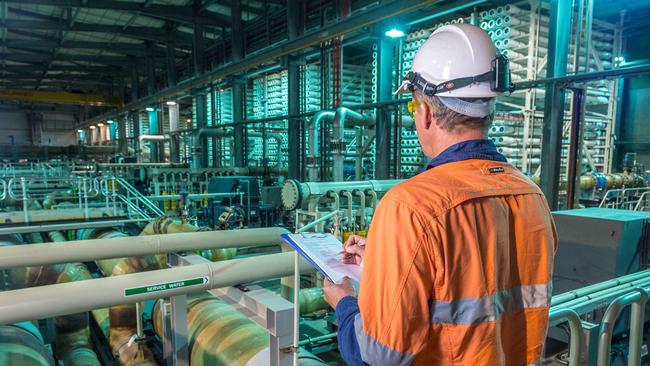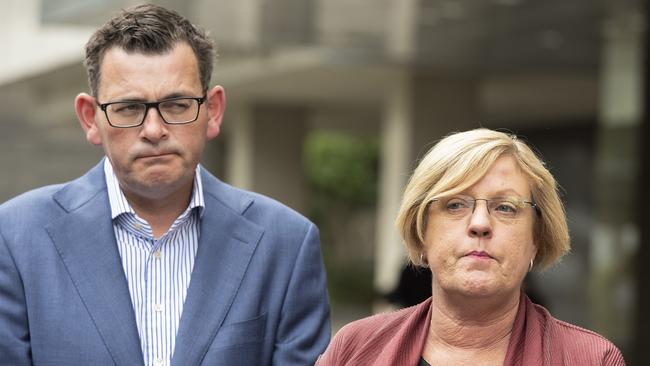Andrews Government considers massive desalination water order
The city’s water supplies have plummeted to the lowest January level since the end of the Millennium Drought, as the government looks at turning on the desal tap.
VIC News
Don't miss out on the headlines from VIC News. Followed categories will be added to My News.
Melbourne’s water supplies have plummeted to the lowest January level since the end of the Millennium Drought as the Andrews Government faces making its biggest-ever order from the desalination plant.
With Victoria sweltering through a scorching summer, water storages have fallen to just 61.1 per cent full — a massive 139 billion litres below the same time last year.
MORE: DESAL PLANT COSTS SOAR TO $3.5 BILLION
GENERATORS SHIPPED IN TO GET DESAL RUNNING
Official modelling seen by the Sunday Herald Sun shows another year of below-average rainfall would leave storage levels below 60 per cent, which authorities use as a trigger to call for extra desal water.
Even normal weather conditions and another minimum desal order of 15 gigalitres this year would not avert near-decade low reserves by next summer.
The city’s water authorities forecast last year that the government would need to order 100 gigalitres — which is 100 billion litres — from the desal plant in 2019.

It is understood the government is now increasingly likely to make that order by April 1 after it receives updated expert advice.
Water Minister Lisa Neville said Victoria was battling “very dry conditions” after spring rainfall across Melbourne’s catchments was 32 per cent below average.
“Desalination is a critical insurance policy for Melbourne to ensure we can avoid severe water restrictions and ensure business and communities have the water they need,” she told the Sunday Herald Sun.
Melbourne’s water storages were just 53 per cent full in January 2011 at the end of a record drought, but have consistently been above 65 per cent at the start of each year since then.
Ms Neville said that without last year’s water order from the desal plant, the city’s water storages would now be just 56.9 per cent full.
The Sunday Herald Sun can also reveal Melbourne’s water usage was up five per cent last year, with residents using an average of 161 litres each every day.

Residential water usage made up 64 per cent of the city’s total water use, nearly a third of which came from showers.
So far this summer, Melburnians are using an average of 166 litres each every day, compared to 180 litres through the first half of last summer, and 185 litres the summer before.
Ms Neville urged Victorians to remember Target 155 — restricting usage to 155 litres per person per day — to save water.
Top tips include limiting showers to four minutes, only using washing machines and dishwashers for full loads, putting a plug in the sink when washing vegetables, and watering the garden for longer but less often to encourage deeper plant roots.



